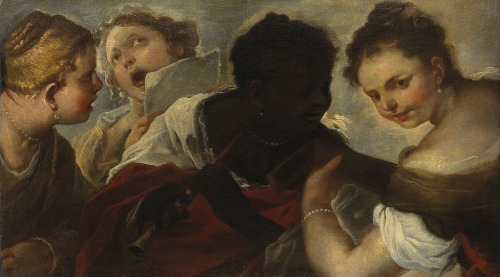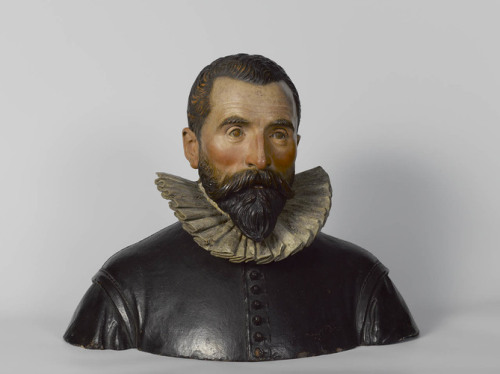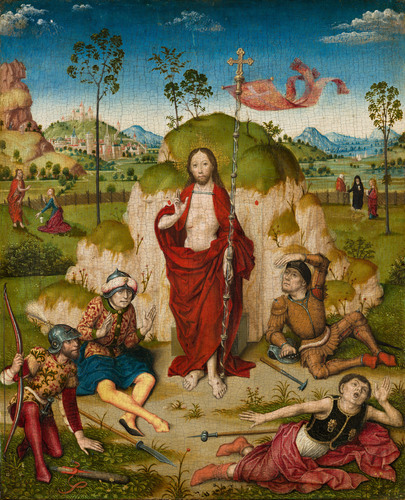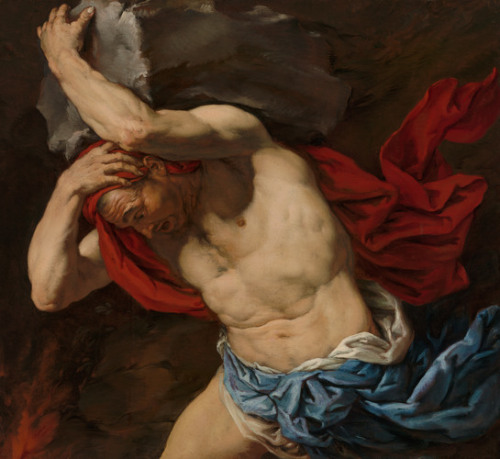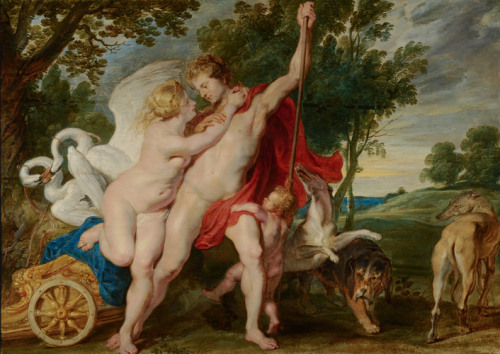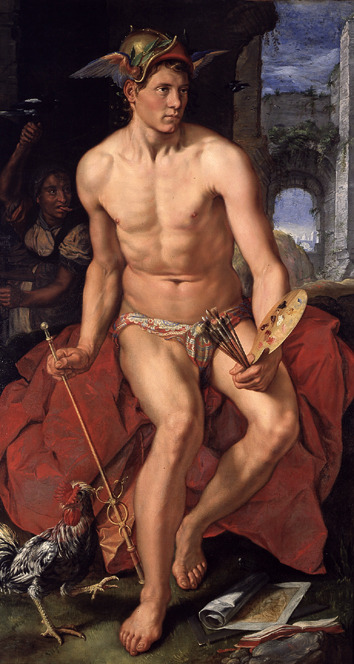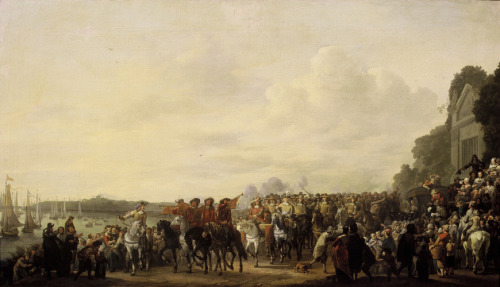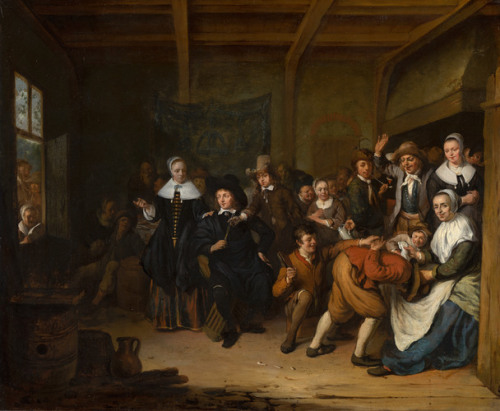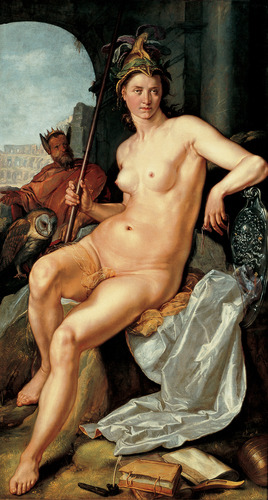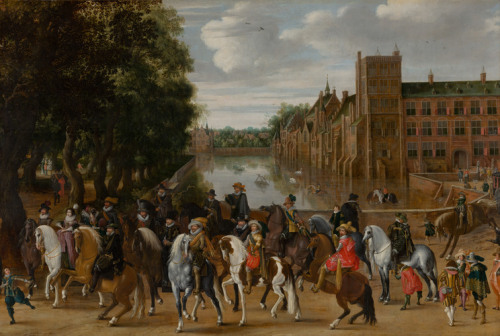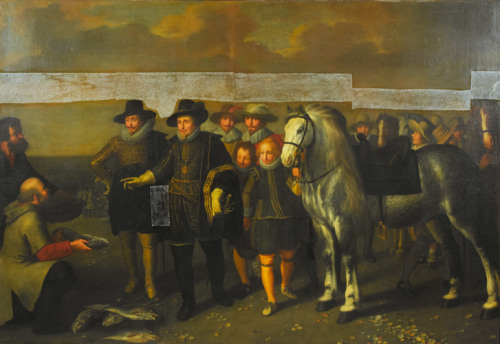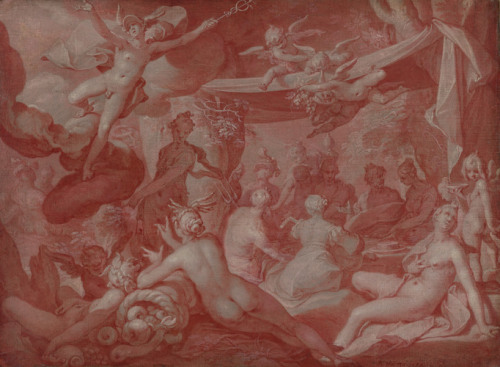#museumarhive
Venus Trying to Restrain Adonis from Departing for the Hunt, Peter Paul Rubens, 1700,Mauritshuis Museum
Post link
Portrait of Jan III (1583-1638), Count of Nassau-Siegen, Anthony van Dyck,Mauritshuis Museum
Post link
Charles II (1630-1685) stopping at the Estate of Wema on the Rotte on his Journey from Rotterdam to The Hague, 25 May 1660, Johannes Lingelbach,Mauritshuis Museum
Post link
Travellers Resting (The Rest on the Flight into Egypt?), Rembrandt van Rijn, 1630,Mauritshuis Museum
Post link
Self-Portrait as a Hunter, Arie de Vois, 1660,Mauritshuis Museum
A hunter and his dog are sitting at the foot of a tree. The man is nonchalantly holding a dead partridge and a hunting rifle. Though it may appear an innocent scene, for Dutch seventeenth-century viewers it had erotic connotations. The words ‘jagen’ (to hunt) and ‘vogelen’ (to catch birds) also referred to courting and making love. The hunter – in imaginary clothing – is a self-portrait of the Leiden ‘fijnschilder’, or fine painter, Arie de Vois. His paintings are distinguished from the work of the other Leiden fijnschilders by their velvety appearance.
Post link
The Princes of Orange and their Families on Horseback, Riding Out from The Buitenhof, The Hague, Pauwels van Hillegaert, 1622,Mauritshuis Museum
Here, the Oranges and members of their family are portrayed riding through The Hague. The painting was probably made by Van Hillegaert, an Amsterdam painter of battles and portraits of horsemen. From the west, we are looking across the Hofvijver lake with the tree-lined Lange Vijverberg on the left and the Binnenhof buildings on the right. The Mauritshuis is not yet in the picture, as it was built some time later.
Post link
Venus Trying to Restrain Adonis from Departing for the Hunt, Peter Paul Rubens, 1700,Mauritshuis Museum
Post link
The Life of Man, Jan Steen, 1665,Mauritshuis Museum
The curtain is lifted to give us a clear view of an inn, where young and old are enjoying eating, drinking, playing and flirting. But for Jan Steen, it was not just about cheerful conviviality. His message is concealed in a small detail by the window. Up in the dark attic, a boy is blowing bubbles next to a skull. Although life is wonderful, eventually it will burst like a bubble.
Post link
Maurits (1567-1625) and Frederik Hendrik (1584-1647), Princes of Orange, on the Beach at Scheveningen, Adriaen van Nieulandt,Mauritshuis Museum
Post link
Feast of the Gods, possibly the Feast at the Wedding of Peleus and Thetis, Abraham Bloemaert, 1598,Mauritshuis Museum
Post link
The Adoration of the Shepherds, Jacob Jordaens, 1617,Mauritshuis Museum
Mary is holding the sleeping Jesus in her arms, showing him to the shepherds. The painter has zoomed in, giving us the feeling that we are in the front row, in the best spot to see the child. And the reflections in the shiny brass jug. The painting has elements of the style of Caravaggio, who was known for his strong lighting effects and raw naturalism. However, the Flemish artist Jordaens never went to Italy. He was introduced to Caravaggism through other painters, such as Rubens.
Post link
Geese and Ducks, Melchior d’ Hondecoeter, 1680,Mauritshuis Museum
Hondecoeter specialised in this type of decorative painting of assorted poultry. This one shows a group of geese and ducks in a landscape with stormy weather. This painting belongs with the painting of hens and ducks that is also hanging here. They come from the collection of the Orange-Nassau family, and were hung in Oranienstein Castle in Diez, Germany, in the eighteenth century.
Post link


